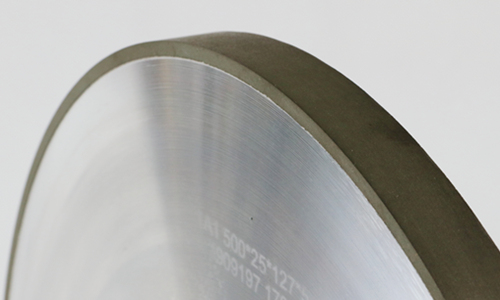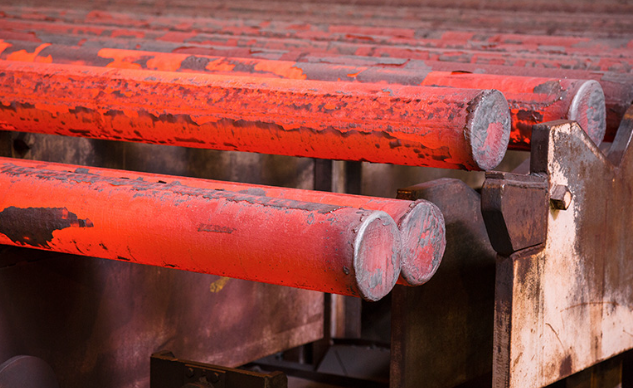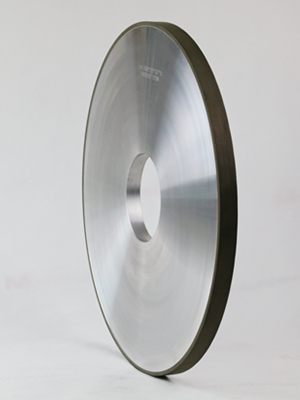Case of resin CBN grinding wheel for grinding Hardened Steel workpiece
What is hardened steel?
Hardened steel refers to steel with a martensite structure and a hardness greater than HRC50 after quenching.
With the rapid development of my country’s industry, the performance requirements for mechanical parts are getting higher and higher. In order to improve the wear resistance of mechanical parts and extend their service life, many structural steel parts are often quenched. However, the strength and hardness of the parts after quenching are high, and the plasticity is poor, which brings difficulties to grinding.
The reason why hardened steel has good performance is that heat treatment is an inevitable process. Common heat treatment processes for hardened steel include annealing, quenching, and tempering. Annealing is before cutting, the purpose is to reduce the hardness of metal materials, improve plasticity, facilitate cutting or pressure processing, and reduce residual stress.
Quenching and tempering are done together. Tempering is performed directly after quenching and before finishing. The purpose of quenching is to enable steel parts to obtain the required martensitic structure, improve the hardness, strength and wear resistance of the workpiece, and prepare for subsequent heat treatment. The purpose of tempering is to eliminate the stress generated during quenching of steel parts, so that the steel parts have high hardness and wear resistance, as well as the required plasticity and toughness.
Resin bond CBN grinding wheels work well in the grinding of high-hardness metals such as alloy steel and hardened steel, reducing the impact of grinding heat on the workpiece.
After heat treatment, the hardness of the workpiece is generally above HRC45, and some even reach above HRC60. Different workpieces have different working properties, so the hardness after heat treatment is also different. For example, the hardness of automobile gearbox gears after heat treatment is generally between HRC58-63, the hardness of slewing bearings after heat treatment is between HRC47-55, and the hardness of ball screws after heat treatment is generally between HRC60-62.
Why choose resin CBN wheel for grinding hardened steel?
Features of resin bond:
Resin bond grinding wheels have good elasticity and strong self-sharpening properties. The abrasive grains are easy to fall off during the grinding process, which can maintain the sharpness of the grinding wheel. This bond has low noise and small vibration during grinding, and is suitable for high-speed and heavy-load grinding.
Applications and effects of resin bond grinding wheels:
Resin bond diamond grinding wheels are mostly used for finishing and polishing of hard and brittle materials, which can reduce surface burns of workpieces and are suitable for materials such as glass and ceramics.
Resin bond CBN grinding wheels perform well in the grinding of high-hardness metals such as alloy steel and hardened steel, reducing the impact of grinding heat on the workpiece.
CBN grinding wheels (cubic boron nitride) are mainly used for grinding hard and tough workpieces. They cannot replace diamond SDC grinding wheels for grinding carbide and non-metallic hard materials. When grinding, only oil-based coolants can be used, not water-based coolants.
Resin-bonded CBN grinding wheels have good self-sharpening properties and are suitable for precision grinding of high-hardness materials such as high-speed steel and tool steel. They are widely used in fine processing of tools and molds.

——Suitable materials——
① High-speed steel: Resin-bonded CBN grinding wheels can maintain sharpness when grinding high-speed steel, ensure processing accuracy and reduce surface defects.
② Tool steel: Tool steel has high hardness, and resin-bonded CBN grinding wheels can grind efficiently and extend the life of the grinding wheel.
③ Hardened steel: Hardened steel has high hardness, and resin-bonded CBN grinding wheels perform well in high-load grinding to avoid excessive wear.
——Processing attention——
① When grinding high-speed steel, the cutting speed should be appropriately reduced to reduce the risk of burns on the workpiece surface.
② The resin bonded CBN grinding wheel should be kept fully cooled during high-load processing to avoid overheating of the grinding wheel and resulting in performance degradation.
③ When processing hardened steel, the grinding wheel surface needs to be regularly trimmed to ensure its self-sharpening and processing accuracy.
Recently Moresuperhard received inquiry about grinding hardened steel workpiece, lets see the suggestions together:
| Work-piece | Cylinder Ø150 x 800mm |
| Material of workpiece | Hardened steel |
| Work-piece speed | 60 100rpm |
| Traverse speed | 300 600mm/min |
| Hardness | 55HRC |
| Stock removal | 0.1mm/Ø |
| Roughness achieved | Ra 0.6μm |
| Coolant | Emulsion 3% |
| Grinding method | Cylindrical external grinding |
| Wheel sizes | 1A1 Ø500-50T-30U-6X-400J-203,2 |
| Machine | GER |
Results:
(1) Time process reduced by about 80% compared with conventional grinding wheel
(2) Lead time reduction from 50 days to 20 days
(3) Use life longer about 300% compared with conventional grinding wheel
—EDITOR: Doris Hu, Alan wang
—POST: Doris Hu





